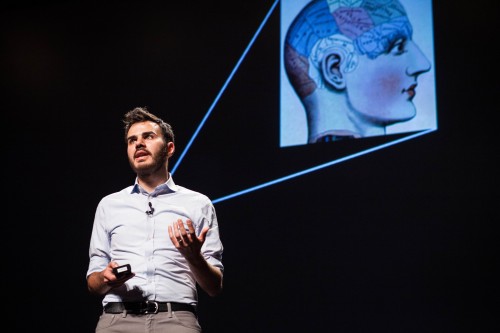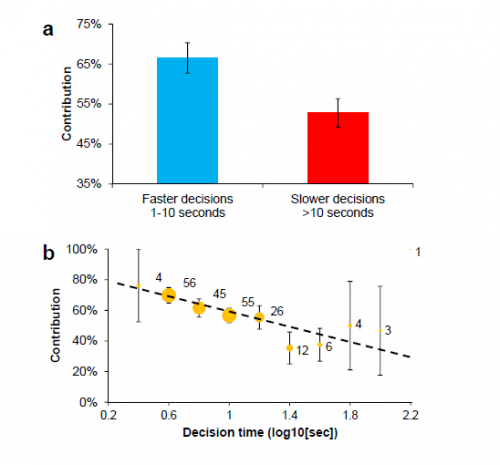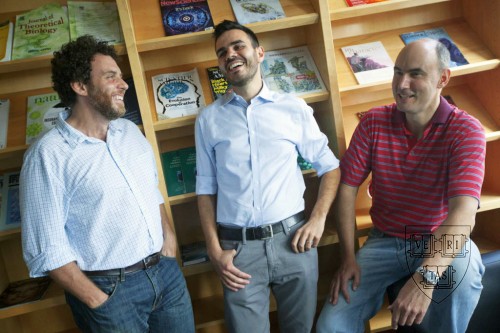Most medical decisions appear to be autonomous events affecting only the health of individuals seeking treatment. However, in the context of public health, popular perception influences individual decisions, which in turn determine the health of populations. Isolation yields to interconnectedness. This interplay becomes particularly apparent in the prevention of contagious disease — while vaccination is a decision individuals make, cumulative choice influences disease incidence. Agencies such as the Centers for Disease Control and Prevention (CDC) must ask in promoting vaccination whether awareness of the health of whole communities drives individual choices to undergo or abstain from vaccination. While game theory would predict self-interest as the primary motivator, new research by former and incoming Yale faculty members suggests that non-selfish motivations such as altruism and cooperation may have a significant influence on individual vaccination decisions.
The Altruistic Anomaly
Assistant Professor of Epidemiology at the University of Pittsburgh (and former Yale Research Associate of Epidemiology) Eunha Shim researches the computation and modeling of infectious diseases and vaccination. In line with a recent shift in epidemiological research toward analysis through game theory modeling, Shim used a modified game theory formula to examine the self-interested and altruistic motivations of individuals to receive or refuse influenza vaccinations.
In the context of Shim’s study, self-interested motivations consider the “direct protection” of vaccinations against disease. Altruistic motivations, on the other hand, consider the “indirect benefits” of herd immunity, the increased protection of unvaccinated individuals in the population when a majority of others are vaccinated. Traditionally, game theory assumes that all “players” in a situation will act selfishly and try to maximize personal payoffs, thus suggesting sole reliance on self-interested motivations.
Challenging this assumption, Shim and her colleagues developed a vaccination model to incorporate consideration of altruism, noting that in similar behavioral game theory studies, “behavior frequently deviates from the predictions of game theory because players care about the outcomes of other players.” The team conducted a survey study among 427 university employees that included questions gauging subjects’ worry about catching the flu themselves (“self-interest”) as well as about spreading the flu to others (“altruism”) with and without vaccination.
After analyzing the survey results with the modified game theory formula, the study concluded that self-interest is more influential, accounting for 75 percent of vaccination decisions, but that a significant 25 percent of motivations for vaccination decisions are altruistic. An outcome almost counterintuitive to the assumed selfishness of game theory, these results suggest that altruism can effect a “deviation from self-interest.” Shim suggests that altruism, though frequently overlooked, is a significant factor to be considered by CDC vaccination campaigns. She concludes, “Promoting altruistic vaccination can be an effective strategy to promote optimal vaccination.”

Intuitive Cooperation, Rational Self-interest
The effect of altruism in Shim’s study can be linked to another game theory study conducted by incoming Yale Assistant Professor of Psychology David Rand. Rand’s study examined the “cognitive mechanisms” of human cooperation on a broader, behavioral level. Through the lens of the dual-processing model of cognition, in which the conflict between “automatic, intuitive processes and controlled, reflective, rational processes” drives decision-making, the study sought to identify predispositions toward selfishness or cooperation.
Rand and his colleagues conducted a series of economic games using online participants from around the world. In each game, individuals were given a certain amount of money and asked how much they would contribute toward a common pool with three other players. Contributions toward the common pool were doubled and split evenly among the four group members. The research team then compared the calculated correlation between question-answer reaction time and degree of cooperation in each group.

The results of the study demonstrated a correlation between cooperation and reaction time. Confirming this general trend, certain games forcing subjects to decide more quickly increased cooperative contributions, while games forcing them to decide more slowly decreased contributions. Further variations of the game began with writing prompts asking about situations when either intuitive or reflective thinking had been beneficial. Whereas inducing an intuitive mindset in subjects increased cooperation, priming a reflective mindset decreased contributions. Together, these results suggest that cooperation in social situations is intuitive while self-interest is rational.
In the context of his study, Rand describes cooperation as being “willing to make sacrifices for the common good,” a definition similar to Shim’s description of altruism as “deviation from self-interest in the direction towards the community optimum.” Rand considers the specific case of vaccination a cooperative action: “Vaccination is a public good. If everyone gets vaccinated, everyone is better off.” According to the results of his study, patients’ intuitive urge to cooperate through vaccination competes with a rational, selfish adverseness to its potential side-effects.

Appealing to Altruism, Marketing against Misperception
Shim states that current vaccination campaigns are beginning to address altruistic motivations but adds, “I think they can do better.” She suggests that the campaigns can become more persuasive by appealing to targeted age groups. For example, because children have high susceptibility and can easily spread disease, the CDC should aim to protect the overall population by focusing on persuading parents of vaccination’s benefits. As children tend to increase infection rates among parents, vaccinating both achieves a “dual impact” of protection. The most common obstacle to this approach, however, is popular misconception of the risks of vaccination.
In a follow-up research article, Shim incorporated patients’ perceptions regarding vaccination and the reasoning behind their decisions. She comments, “A lot of people choose not to get the influenza vaccine because it is inconvenient for them.” Additionally, “some parents think it’s not safe to vaccinate their kids.” Citing the perceived link between autism and vaccines as an example, she explains that while such claims are not supported scientifically, they can shape the public perception and stimulate fear.
Rand expresses a similar opinion, proposing that the CDC focus their campaigns on exposing misconceptions about vaccination’s personal costs. He asserts, “It’s not like you are paying an individual cost for the great good; it is in your own interest to get vaccinated.” If individuals gain a more accurate understanding of the costs and benefits of vaccination, the conflict between intuitive cooperation and rational self-interest will be minimized; vaccination will be viewed as a gain for self-interest rather than a sacrifice.
Shim’s approach to increasing the effectiveness of current vaccination campaigns through altruism challenges the fundamental assumption of epidemiological game theory by suggesting potential for deviation from self-interest. However, both she and Rand also recognize the importance of appealing to self-interest by correcting misconceptions. The findings of each study, as well as the persuasive strategies Shim and Rand advocate suggest that vaccination campaigns should take both altruistic cooperation and self-interest into account.
One of this year’s CDC publications urges readers to “get a flu vaccine to protect me, my family, and my co-workers!” and promotes the slogan “the FLU ends with U.” Another brochure reads, “Flu viruses are unpredictable, and every season puts you at risk. Besides…You don’t want to be the one spreading flu, do you?” Current vaccination campaigns appear to recognize the importance of appealing both to patients’ self-interest as well as to their concern for the common good — the question that remains is how to prioritize these persuasive approaches most effectively.
About the Author: Jessica Hahne is a sophomore English major in Silliman College. She is a copy editor and an online articles editor for the Yale Scientific Magazine.
Acknowledgements: The author would like to thank Dr. Eunha Shim and Dr. David Rand for their time and enthusiasm about their research.
Extra Reading:
1) Shim, Eunha, Gretchen B. Chapman, Jeffrey P. Townsend, and Alison P. Galvani. “The influence of altruism on influenza vaccination decisions.” Journal of the Royal Socciety Interface. 9. no. 74 (2012): 2234-2243.
2) Rand, David, Joshua D. Greene, and Martin A. Nowak. “Spontaneous Giving and Calculated Greed.” Nature. 489. no. 7416 (2012): 427-430.
3) Funk, Sebastian, Marcel Salathé, and Vincent A. A. Jansen. “Modelling the influence of human behavior on the spread of infectious diseases: a review.” Journal of the Royal Socciety Interface. 7. no. 50 (2010): 1247-1256.
4) Hershey, John C., David A. Asch, Thi Thumasathit, Jacqueline Meszaros, and Victor V. Waters. “The Roles of Altruism, Free Riding, and Bandwagoning in Vaccination Decisions.” Organizational Behavior and Human Decision Processes. 59. no. 2 (1994): 177-187.
5) Centers for Disease Control and Prevention, “Some Common Misconceptions about Vaccination and How to Respond to Them.” Last modified 2011. https://www.cdc.gov/vaccines/vac-gen/6mishome.htm.
Cover Image: Vaccines are often administered by needle and syringe. The injection may be delivered intravenously, arterially, intramuscularly, subcutaneously, or through other modes. Courtesy of the Public Health Image Library.
